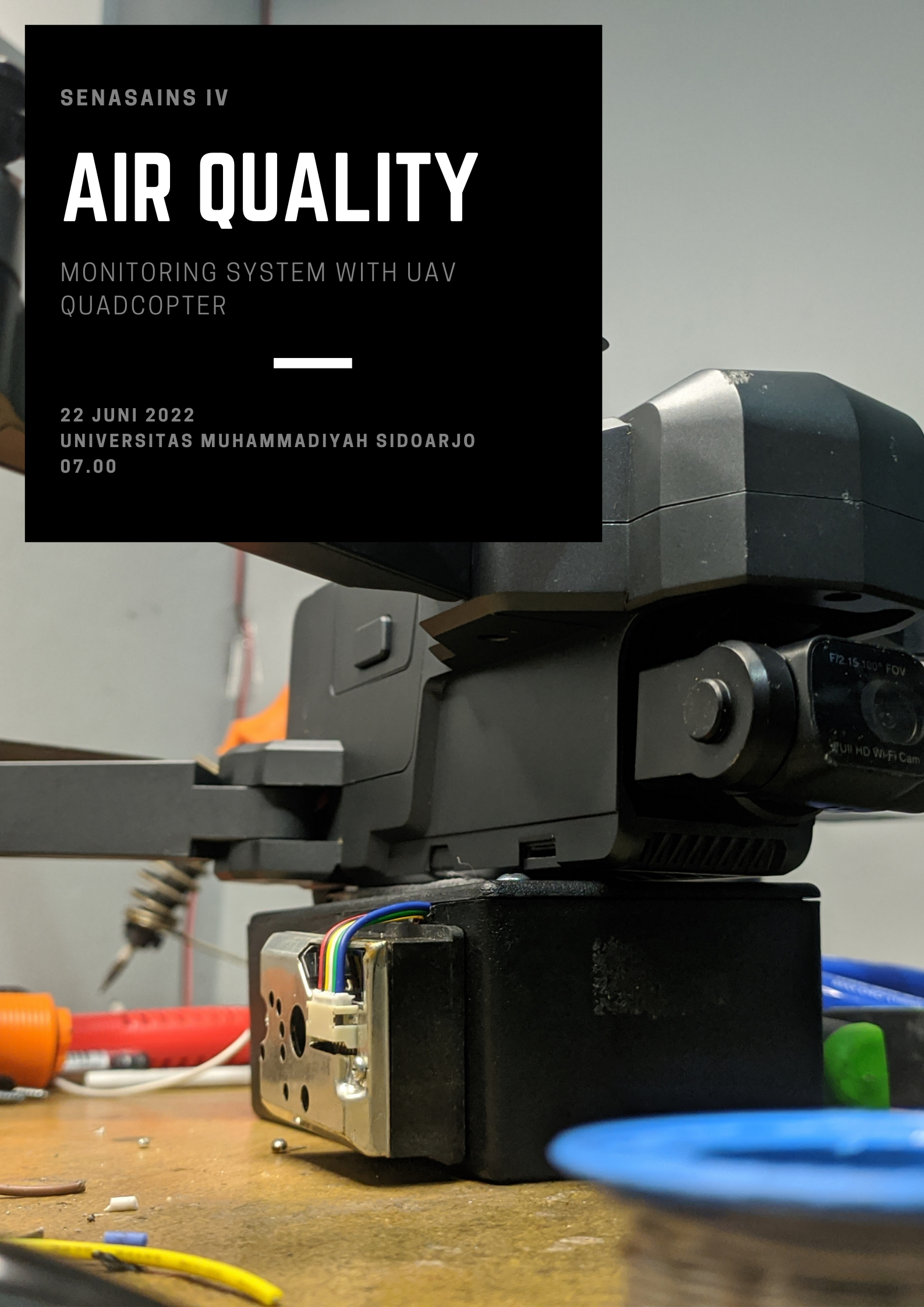Air Quality Monitoring System using Unmanned Aerial Vehicle (UAV) Quadcopter Type
Sistem Monitoring Kualitas Udara menggunakan Unmanned Aerial Vehicle (UAV) Jenis Quadcopter
DOI:
https://doi.org/10.21070/pels.v2i2.1244Keywords:
Drone, Monitoring, PolusiAbstract
Air is an important factor in life and living. However, nowadays, in line with the development of industrial technology and transportation, air quality is also experiencing degradation caused by pollution in the cleanliness of the air, or as a result of a reaction to changes in the composition of normal air with pollutant substances (gas and dust particles) into it so that it interferes with the sustainability of the respiratory system. humans, animals and plants. Based on this, it is necessary to have a tool to monitor air quality. This study aims to create and develop an air quality monitoring tool using aerial drones. The tool is made using several sensors including the MiCS-6814 sensor to measure CO and NO2 gas, the MQ-135 sensor to measure SO2 gas, the GP2Y1010 sensor to measure the intensity of dust particulates, DHT-11 to measure temperature and humidity, and the ESP32 microcontroller to transmit data obtained to Blynk Apps via the internet. The results obtained, the MiCS6814 and MQ135 sensors did not catch any CO, NO2 and SO2 gas particulates in the air, the dust sensor got 46.31 ug/Nm3, and the DHT11 sensor got temperature of 27.1°C and a humidity of 46%.
Downloads
References
Ismiyati, D. Marlita, and D. Saidah, “Pencemaran Udara Akibat Emisi Gas Buang Kendaraan Bermotor,” J. Manaj. Transp. Logistik, vol. 01, no. 03, pp. 241–248, 2014.
Permenkes RI KMK No. HK.01.07/MENKES/382/2020, “Corona virus disease 2019,” Peratur. Menteri Kesehat. Republik Indones., vol. Nomor 9, no. Pedoman Pembatasan Sosial Berskala Besar dalam Rangka Percepatan Penanganan Corona Virus DIsease 2019 (COVID-19), pp. 2–6, 2020, [Online]. Available: http://jurnalrespirologi.org/index.php/jri/article/view/101.
S. Syahrorini and A. Ahfas, “Aplikasi Alat Ukur Debu Berbasis Sms dan Analisis Model Dispersi Gauss,” Elinvo (Electronics, Informatics, Vocat. Educ., vol. 3, no. 1, pp. 18–24, 2018, doi: 10.21831/elinvo.v3i1.19241.
D. B. Istantinova, M. Hadiwidodo, and D. S. Handayani, “Pengaruh Kecepatan Angin, Kelembaban Dan Suhu Udara Terhadap Konsentrasi Gas Pencemar Sulfur Dioksida (So2) Dalam Udara Ambien,” Tentang Konsentrasi Gas Sulfur, vol. 10, no. Gas Sulfur, pp. 1–10, 1995.
J. M. S. Waworundeng and O. Lengkong, “Sistem Monitoring dan Notifikasi Kualitas Udara dalam Ruangan dengan Platform IoT,” CogITo Smart J., vol. 4, no. 1, p. 94, 2018, doi: 10.31154/cogito.v4i1.105.94-103.
D. Hartono and S. Darmawan, “Pemanfaatan Unmanned Aerial Vehicle (UAV) Jenis Quadcopter untuk Percepatan Pemetaan Bidang Tanah (Studi Kasus: Desa Solokan Jeruk Kabupaten Bandung),” Reka Geomatika, vol. 2018, no. 1, pp. 30–40, 2019, doi: 10.26760/jrg.v2018i1.2655.
S. Syahrorini and D. Hadidjaja, “Aplikasi Alat Ukur Partikulat Dan Suhu Berbasis Iot,” Dinamik, vol. 25, no. 1, pp. 1–9, 2020, doi: 10.35315/dinamik.v25i1.7512.
A. Alchamdani, “NO2 and SO2 Exposure to Gas Station Workers Health Risk in Kendari City,” J. Kesehat. Lingkung., vol. 11, no. 4, p. 319, 2019, doi: 10.20473/jkl.v11i4.2019.319-330.
Y. Ismail, A. D. Nurwidyawati, and A. D. Rahayu, “Estimation of Vehicles Carbon Dioxide ( CO 2 ) Emission,” vol. 4, no. 2, pp. 94–99, 2019.
“ESP32 DevKitC Pinout, Overview, Features & Datasheet.” https://components101.com/microcontrollers/esp32-devkitc (accessed Dec. 23, 2020).




